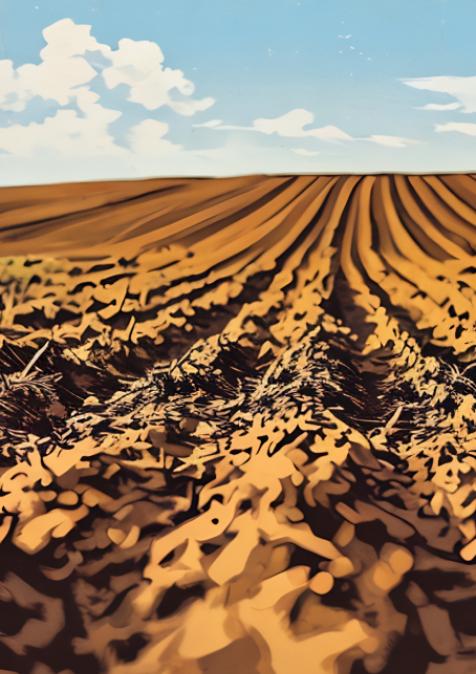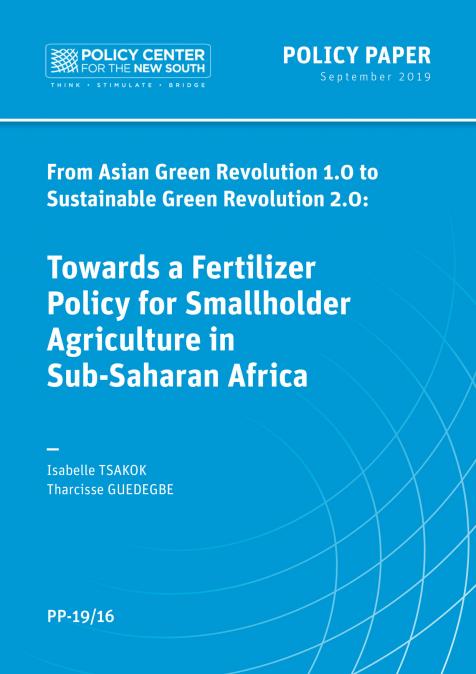Publications /
Opinion
As the world commemorates Earth Day 2025 under the theme "Planet vs. Plastics," it is a timely moment to turn our attention to one of the planet’s most overlooked heroes: the soil. Often hidden beneath our feet and largely absent from climate conversations, soil plays a vital role in sustaining life, supporting biodiversity, and buffering the impacts of climate change. Honouring the soil as Earth’s silent lifeline is not just a tribute—it is a call to action.
The Foundation of Life
Soil is not just dirt. It is a living, breathing ecosystem, with each gram containing billions of microorganisms. These microbes—alongside insects, fungi, and plant roots—form a complex web of life essential to the food we eat, the water we drink, and the air we breathe.
More than 95% of our food comes directly or indirectly from soil. It supports agriculture, filters water, stores carbon, and helps regulate the Earth's temperature. Without healthy soils, food security collapses, water systems deteriorate, and our ability to combat climate change is drastically diminished.
Yet, this essential natural resource is under threat.
Soil under Siege
Across the globe, soil degradation has reached alarming levels. According to the United Nations Food and Agriculture Organization (FAO), one-third of the world’s soil is already degraded—affected by erosion, loss of organic carbon, salinization, acidification, and contamination. In much of sub-Saharan Africa, these issues are particularly acute, driven by deforestation, overgrazing, unsustainable farming practices, and urban sprawl.
In many countries, soil continues to serve as a dumping ground for plastic waste. Studies consistently reveal significant quantities of microplastics in soil. Estimates suggest that agricultural soils worldwide may contain between 1.5 and 6.6 million tons of microplastics. Some studies have reported concentrations ranging from 210 to 2,000 microplastic particles per kilogram of soil.
The consequences are severe. Degraded soils yield less food, contributing to hunger and malnutrition. They also lose their ability to sequester carbon, exacerbating greenhouse gas emissions. In drought-prone areas, degraded soils are less able to retain water, intensifying the effects of climate variability and increasing the risk of famine.
Climate, Carbon, and the Soil Connection
Healthy soils are one of our most effective natural carbon sinks. Globally, soils store more carbon than the atmosphere and all plant life combined. Through photosynthesis and the accumulation of organic matter, soils sequester carbon and play a crucial role in regulating the Earth’s climate.
However, when soils are disturbed—by deforestation, ploughing, or erosion—this stored carbon is released back into the atmosphere, accelerating global warming. Soil health is, therefore, intricately linked to climate action. If we are to keep global temperatures within safe limits, protecting and restoring our soils must be a priority.
Earth Day: A Chance to Reconnect
Earth Day reminds us that the health of our planet depends on the health of its ecosystems—and soil lies at the heart of this web of life. Soil belongs to all of us: to the millions who have returned to it, to the billions alive today, and to the generations yet to come. This year, let Earth Day be a turning point. Let us stop taking soil for granted and start recognizing it for what it truly is: Earth’s silent lifeline.
What Can You Do?
Start by educating yourself about soil—and extend that knowledge to your community through public awareness campaigns and conversation. Support land restoration efforts such as tree planting, rewilding, and erosion control programs to help revive degraded landscapes. Advocate for policies that ensure African governments prioritize soil protection in climate action plans, urban development, and food security strategies.
Local solutions are already taking root. Agroecology training for smallholder farmers, reforestation in erosion-prone areas, and the revival of indigenous, soil-friendly techniques are showing promise. Organizations like GIFSEP and others are working at the grassroots level to integrate soil conservation into broader efforts for climate justice and food security advocacy.
Conclusion: A Legacy of Earth Stewardship
This Earth Day, let us move beyond symbolic tree-planting ceremonies toward transformative action for the soil beneath them. Let us empower farmers with knowledge, equip policymakers with data, and inspire citizens with stories of renewal.
Beyond its scientific value, soil carries deep cultural and spiritual meaning. For many communities in Africa and around the world, land and soil are not merely resources—they are sacred gifts, passed down through generations. To dishonour the soil is to dishonour our ancestors—and to deny our children a future.
The soil does not shout. It does not demand attention. Yet it feeds us, cools the planet, and anchors entire ecosystems. It is time we give it the honour it deserves.
So, whether you are a policymaker, a farmer, a student, or a concerned citizen, remember this Earth Day: the future is built on soil. Let us treat it not as an afterthought, but as the very foundation of life on Earth. To let soil die is to let life itself falter.





